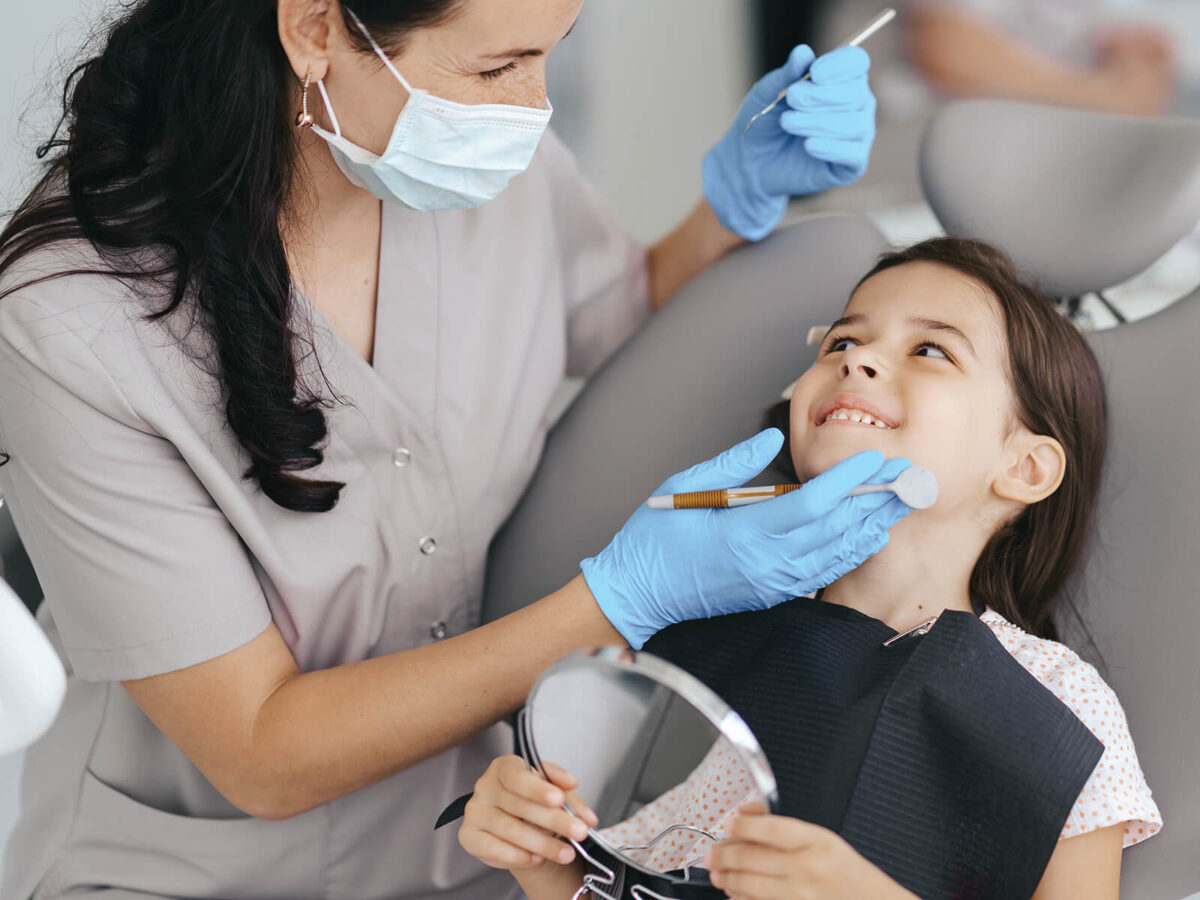Blog
Dental hygiene tips for healthy teeth & gums

When Should Your Child See An Orthodontist?
One thing about most oral health issues is that they do not self-resolve. Home remedies might save money or time, but they are not doable in the real sense. This has also laid arguments that when children grow up, they are immune to dental ailments, or when they become young adults, their teeth will grow back, which is entirely unrealistic.
This is especially applicable to pathological disorders such as orthodontic problems that require early intervention to prevent destructive growth patterns, which may be painful and costly. Your child requires functional teeth and jaws that are correctly aligned to form a secure and sustainable smile. The earlier we intervene in and take proper care of our child’s dental health, the more likely they are to have better overall health.
All parents wish the best for their children, and that’s why understanding the symptoms and when to ask for help is crucial. Let’s see some tips for the same from Sterling Smiles of Azle.
What Should One Expect to occur during the first visit?
Some kids won’t need any treatment, and if they do, it might not be a good idea to start with retainers or braces. Few patients are expected to have to wait for their permanent teeth to develop within the mouth to undergo this treatment. If early treatment is required, we will perform two small treatment steps instead of one big one in the teens. There are two steps of orthodontic treatment called “Phase 1” and “Phase 2”.
Phase 1 is typically administered around ages seven through ten.
Phase 1 often involves a less invasive form of orthodontic treatment such as five front teeth braces, a retainer, palatal expander, spacers, or a combination of the above. Going through Phase 1 is designed to prevent issues from arising in Phase 2.
In certain cases, there is no need to pursue the phase 2 follow-up treatment. Phase 1 covers correction in less than a year. Then, during adolescence, adjustments are made regularly to determine whether braces or other treatment may be needed.
However, your child may not require any treatment or at some other time. If so, there is often a review after one year or within six to twelve months from the first meeting. During those appointments, the child’s progress shall be assessed, and from the same assessment, it will be determined if the child will need the braces between the ages of 11-14.
Signs That You Need to Take Your Child to an Orthodontist
1. Your Child has Just Turned 7 Years Old
Teeth start to fall out at five or six, depending on how the teeth develop. Some primary or deciduous teeth may also erupt a few months after this development, giving way to a few permanent teeth. This aspect is essential for your child’s smile development during this stage.
A recommendation put forth by Sterling Smiles of Azle is that a youngster should see an orthodontist for the first time at the age of seven or eight. This may seem relatively young, but issues such as bite, overbite, or crowding can be detected here and rectified instead of waiting until later.
2. Your Child’s Teeth are Overlapping or Gapping
The cases of overcrowded and spaced-out teeth are among the most frequent circumstances within the field of orthodontics. So, if you realize that your child has either of these problems, it would be more effective to search for some treatment since the spacing or crowding, in general, is very serious, and it would be much more challenging to fix it later.
When several teeth are grouped closely together, it becomes challenging to clean them properly due to the closeness, making them vulnerable to decay.
3. Your Child has a Peculiar Overbite, Underbite, or any Other Unfavorable Bite Configuration
It’s also defined as a vertical overlap where your upper teeth are in front of the lower ones. Almost every adult has a slight overbite, but this is a problematic dental condition that can lead to many problems, including tooth decay, jaw joint pain, severe headaches, limited ability to open mouth, sleep disorders, pain during meals, and difficulties in speaking.
That is why early detection of these problems is critical, and we agree with taking your children to the orthodontist as early as possible!
4. Your Child is Mouth Breathing
Clenching of the teeth may not appear to be a significant orthodontic condition, yet mouth breathing poses considerable harm. If the child is breathing abnormally where the air is going straight into the lungs, and the nose is not involved, it is time to see the orthodontist.
Mouth breathing may lead to abnormalities in facial patterns, frequent ear infections, sleep disorders, upper respiratory infections, and distorted jawbones, worsening orthodontic issues.
5. Your Child is Never too Old to see the Orthodontist!
Orthodontic treatments such as braces, Invisalign, and many others are suitable for everyone regardless of age. But if your child is way past seven years, don’t worry. You can always set an appointment even if you’re past a specific date.
If you are proactive and go for appointments while the children are still young, this would reduce the need for jawbone surgery, but never not too late. Therefore, you should not hesitate to make an appointment for a visit for your child today.
Summing It Up
It will only take one visit to the orthodontist early on, and parents can prepare for the need for treatment as advised. The children will also be able to understand how they can avoid getting their oral hygiene out of hand. An early assessment as suggested by Sterling Smiles of Azle enables correction to be made early, and from our experience, your child will get an even better smile in the coming years.


